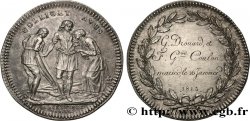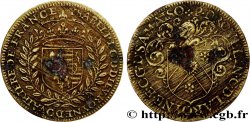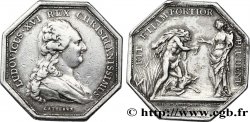fjt_791242 - NORMANDY (GENTRY AND TOWNS OF...) Pierre le Marchant, trésorier général des finances à Caen 1627
180.00 €(Approx. 203.40$ | 154.80£)
Quantity
Add to your cart

Type : Pierre le Marchant, trésorier général des finances à Caen
Date: 1627
Metal : silver
Diameter : 27 mm
Orientation dies : 6 h.
Weight : 5,85 g.
Edge : lisse
Rarity : R1
Catalogue references :
Predigree :
Exemplaire provenant de la Collection MARINECHE
Obverse
Obverse legend : * PIERRE. LE. MARCHANT. ECVIER. SR. DE. SAINT. MANVIEV.
Obverse description : Écu aux armes de Pierre Le Marchant lambrequiné.
Reverse
Reverse legend : .*. ÆTERNITATI .*. ; À L'EXERGUE : .1627..
Reverse description : Deux cœurs sur la double cime d'un mont.
Reverse translation : (Pour l'éternité).
Commentary
Pierre Le Marchant est écuyer et porte d'argent, au chevron de gueules, accompagné de trois roses de même posées deux et un. Deux localités appelées Saint-Manvieu existent : Saint-Manvieu-Bocage (canton de Saint-Sever-Calvados, Calvados) et Saint-Manvieu-Norrey (canton de Tilly-sur-Seulles, Calvados). Pierre Le Marchant est aussi seigneur du Rozel (canton de Les Pieux, Manche). Il fonda au Puy du Palinod de Caen une Ode française, dont le prix est de 100 jetons d’argent dans une bourse de velours vert. Conseiller et secrétaire du roi, trésorier général de France à Caen, il mourut dans cette ville où il est inhumé dans l’église des Cordeliers. Il est le dernier mâle de cette branche. Le bureau des finances d’une généralité est composé de sept personnes : cinq trésoriers généraux de France (deux pour le Domaine, deux pour les aides et imposition, un trésorier) ainsi qu’un greffier et un huissier. L’institution tombe en une profonde inutilité aux XVII et XVIIIe siècles : un autre trésorier de France fut célèbre à Caen, la Bruyère, qui en douze ans, n’est venu que le jour de sa réception.







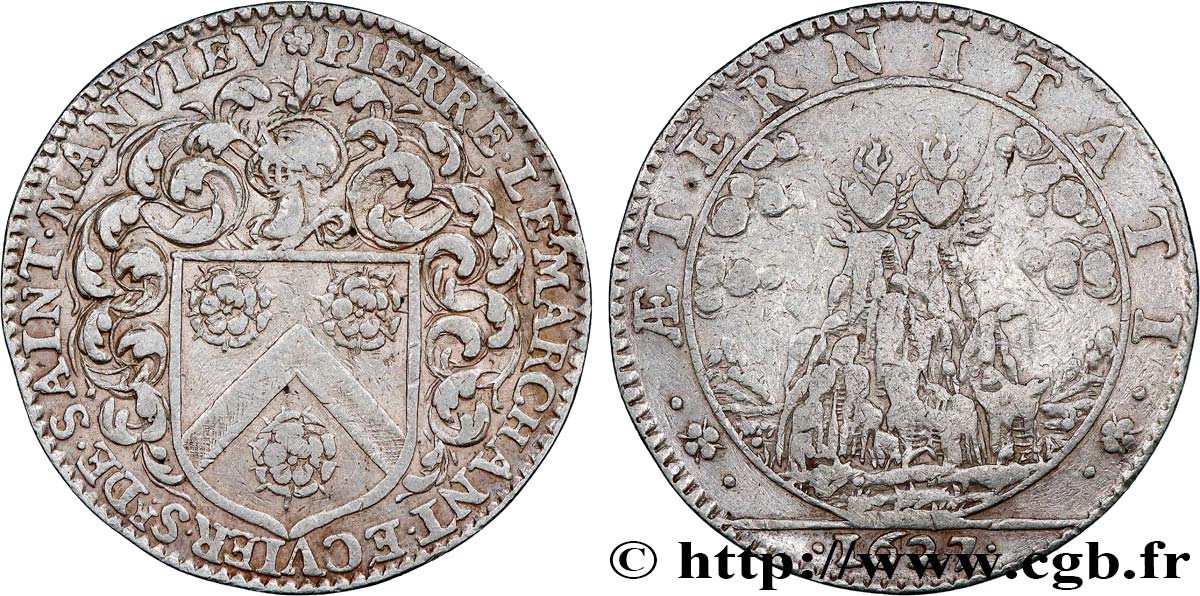
 Report a mistake
Report a mistake Print the page
Print the page Share my selection
Share my selection Ask a question
Ask a question Consign / sell
Consign / sell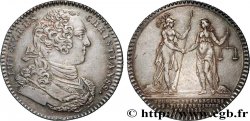
 Full data
Full data